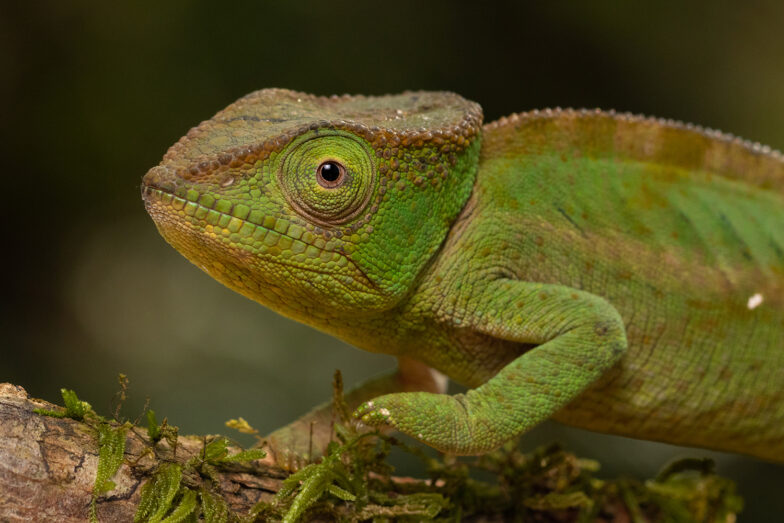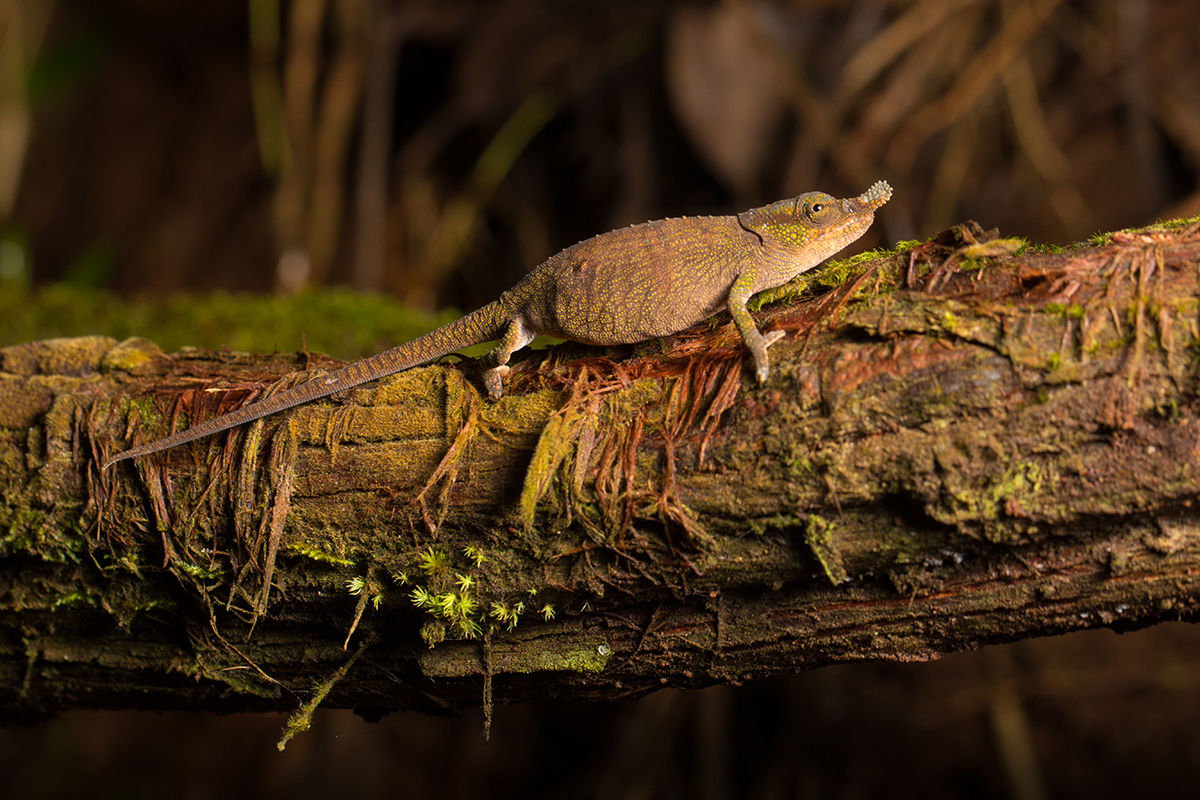There are still almost unexplored areas on Madagascar today. The Ivohiboro rainforest is located in the southeast of the island in the protected area of the same name, southwest of the southernmost foothills of the Andringitra Mountains. The forest itself is about 8.58 km² in size and thus only occupies a small part of the protected area. It is surrounded by savannahs and spans altitudes from 650 to 1460 m above sea level. The protected area is currently managed by local organisations and Madagascar’s Ministry of Environment. The last expedition to explore the Ivohiboro forest took place in 1924. Since 2016, researchers from the USA and Great Britain have now undertaken six expeditions to the small forest to study the biodiversity of plants, birds, mammals, reptiles, and amphibians there in more detail.
To detect reptiles and amphibians, the forest was divided into nine transects of about 200 x 20 m, each more than 200 m apart. The transects were searched for several days and nights. All animals found were documented and, if possible, identified down to genus or species level.
As a result, the scientists were able to identify 107 species of vertebrates and 219 plants. This enormous diversity of species underlines the importance of preserving the forest in terms of species conservation and indicates a well-functioning ecosystem. Among the species found were two chameleons: a Palleon species and a small Calumma. Unfortunately, the publication does not provide any further information on the former. The small Calumma had a conspicuous blue coloured rostral appendage, as it is found in Calumma linotum or Calumma boettgeri in the far north of Madagascar. As genetic studies are still lacking, it is unclear whether these chameleons are an extremely wide range extension – Ivohiboro lies about 1000 km south of the ranges of Calumma boettgeri and Calumma linotum – or whether it is perhaps even a new, as yet undescribed species.
A surprising haven: The biodiversity of an old-growth forest amidst a scorched landscape in Madagascar
Beatriz Otero Jimenez, Ren Montaño, Ryan S. Rothman, Rachel C. Williams, Patricia C. Wright
Conservation Science and Practice, 2023
DOI: 10.1111/csp2.12993




